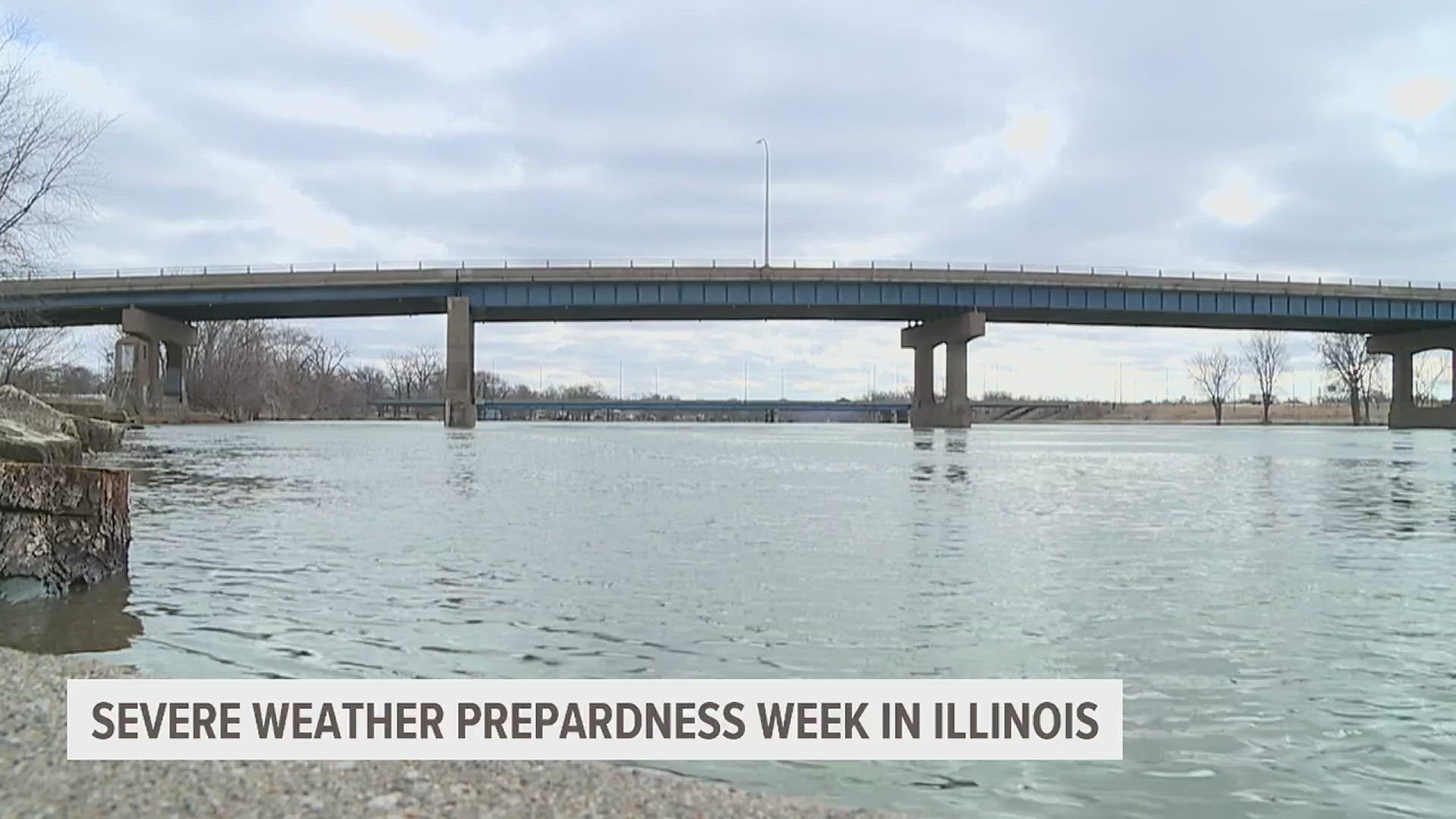MOLINE, Ill. — The final two weather phenomenon that needs to be discussed for Severe Weather Preparedness Week are severe thunderstorms and flooding.
Severe Thunderstorms
Just like with tornadoes, there are watches and warnings for severe thunderstorms. These two weather events share many of the same qualities and safety measures.
A severe thunderstorm watch means that you need to be prepared, have multiple ways to stay informed and have a place to go if you need shelter.
A Severe thunderstorm warning means that you need to act. You will need to take shelter indoors away from windows. If you are caught in the storm while driving, continue with caution — but if it gets to the point where there is no visibility, pull over and put your hazard lights on and have a way to stay informed about the weather.
With many spending more time outside as temperatures warm during the spring, make sure you know the forecast before you head out. If you are outside and there is potential for a severe thunderstorm, make sure you have a way to check for warnings and have a place nearby that you can shelter in if needed.
Severe thunderstorms can produce strong winds, hail and heavy rain. You want to be inside because winds with a speed of 58 mph or greater can lift debris or break tree branches. Hail can damage material objects and hurt humans. Heavy rainfall can cause flash flooding, and it only takes six inches of flowing water to sweep you off your feet.
Flooding
A flood watch means that you need to get prepared. These conditions are favorable for water to overflow normally dry land, so have a plan to get to higher ground if needed and have ways to get informed about the weather.
A flood warning means water is overflowing onto normally dry land or will overflow soon. This event can last days or weeks. The Quad Cities have already experienced some of these in a few short days of metrological spring.
Most flood-related deaths occur in vehicles, and it takes 12 inches of water to sweep a car off the road. If you come across a flooded road, remember “turn around, don’t drown.”
When you drive into flood waters not only do you put your life at risk, you put the lives of the rescuers at risk as well.
Watch more news, weather and sports on News 8's YouTube channel

